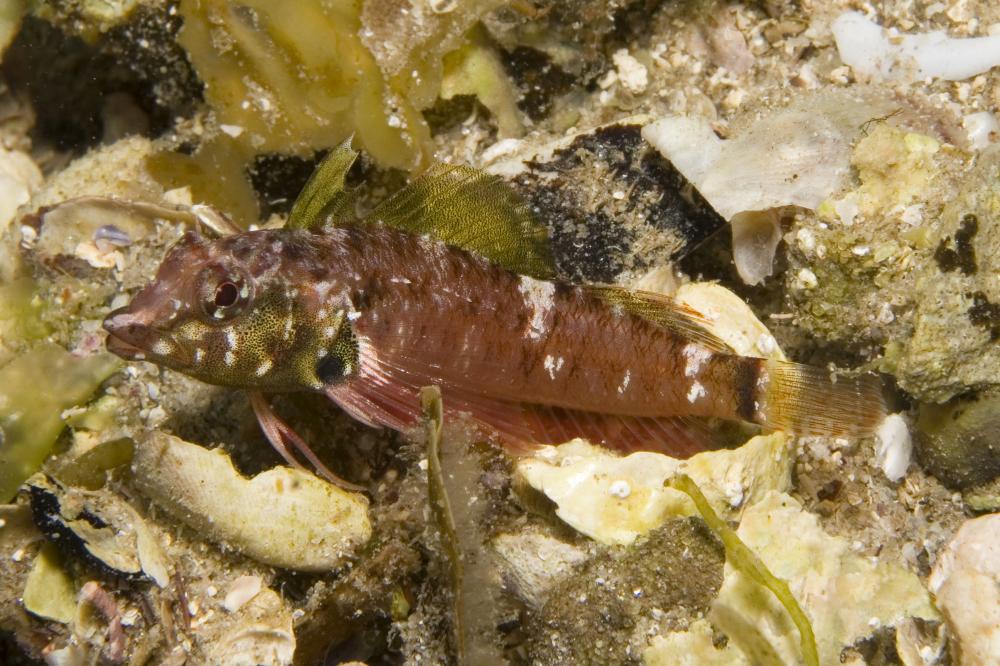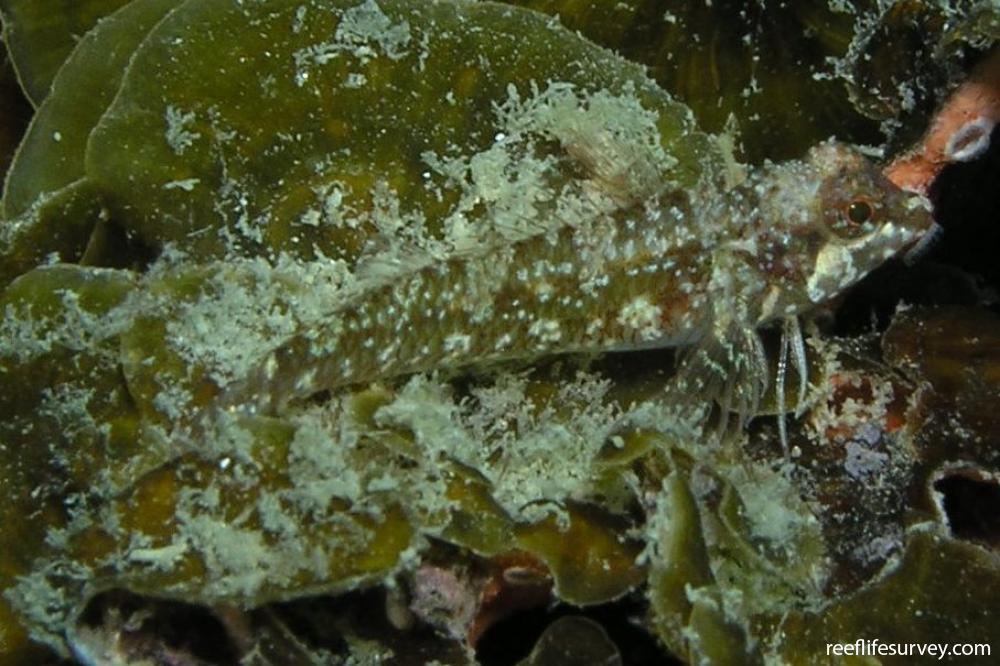Enneapterygius atrogulare
Black-throat triplefin | Eastern Australian Blackhead Triplefin | Ringed Triplefin | Ringscale Threefin | Saddled Triplefin | Enneapterygius annulatusSimilar Species
Same Genus
Distribution
Tropical Indo-Pacific
Description
Female mottled brown, without any distinctive marks, though rear half of body often slightly more yellow and a pale curved line beneath eye. Males and females have narrow darkish band on tail base, but not always obvious. During spawning season, male is reddish with black head and female is brighter ('sparkly') when spawning.
Common on mainland in shallow water but not found at offshore locations such as Lord Howe and Norfolk islands.
Similar E. rufopileus (Blackcheek Threefin) has comparatively shorter 1st dorsal fin (50% height of 2nd dorsal fin in females, 75% height in males) and is restricted to offshore locations (not found on the mainland). NB: maps and database to be updated to reflect these geographic distributions.
Males of other Enneapterygius threefins can have black heads; e.g. E. larsonae (Blackhead Threefin) and E. similis (Masked Threefin).
Information
Max Size: 5 cm
Sea Temperature Range: 16.2-25.6°C
Depth: 0-5m
Habitat Generalization Index: 7.79
Also referred to as the SGI (Species Generalisation Index), this describes the habitat niche breadth of the species. Species with values less than 15 are found in a relatively narrow range of reef habitat types (specialists), while those over 25 may be found on most hard substrates within their range (generalists). Learn more here.
Conservation and Rarity
IUCN Status: Not Evaluated
Occurrence: Common (22.5% of sites)
Occurrence describes how often the species is found on surveys within its distribution. It is calculated as the % of reef sites surveyed by RLS divers across all the ecoregions in which the species has been observed
Abundance: Several (7 per transect)
Abundance is calculated as the average number of individuals recorded per RLS transect, where present.
Edit by: Andrew Green






















![Enneapterygius sp. [Red Sea]](https://images.reeflifesurvey.com/0/species_ba_5ae13db303c56.w400.h266.jpg)
